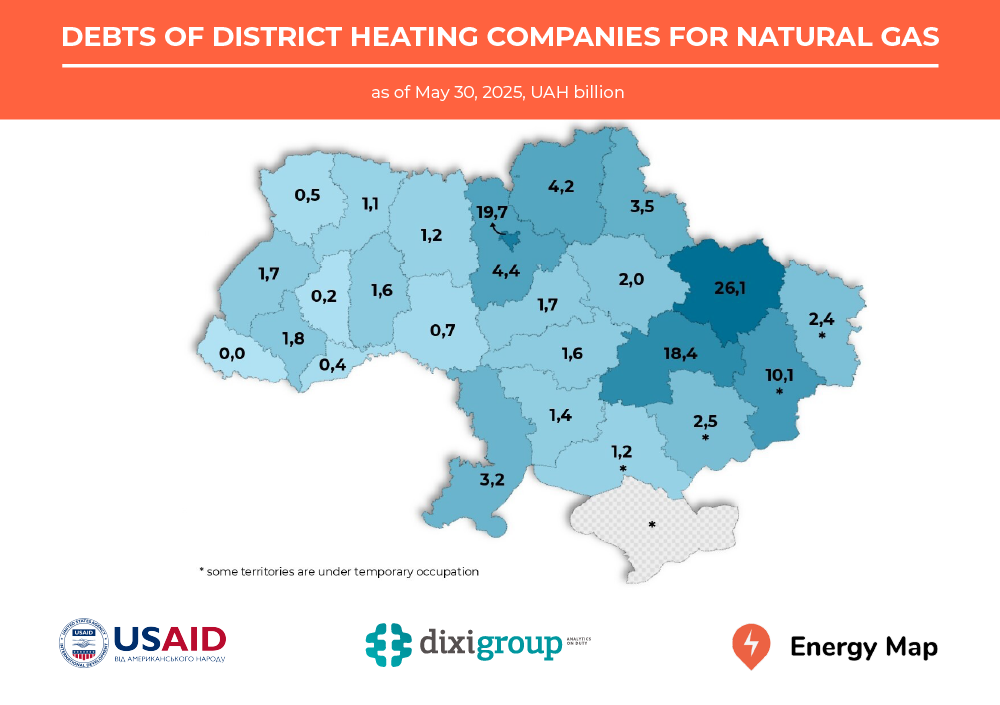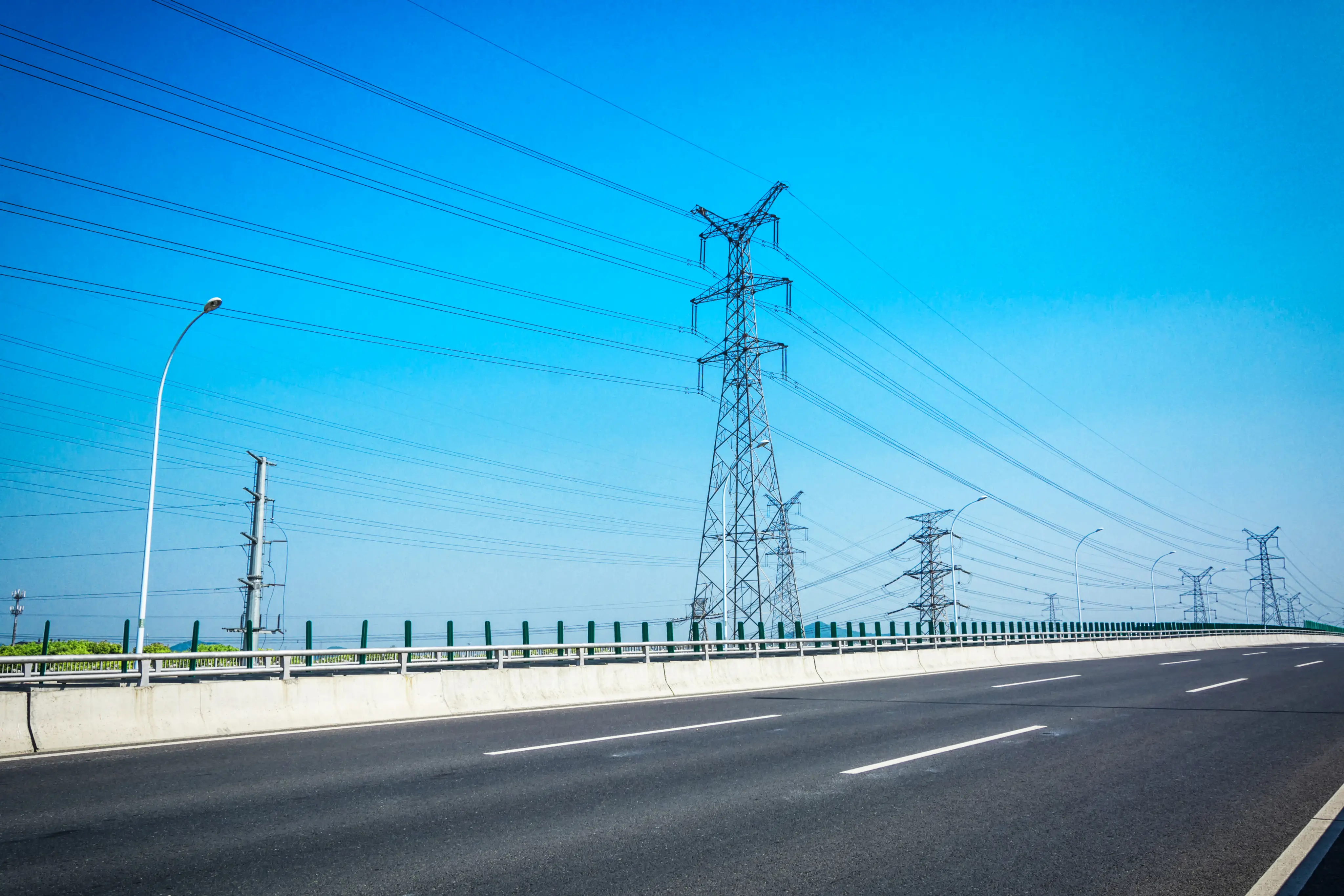As of the end of May 2025, the total debt of heat supply companies for natural gas and water utilities for electricity and its distribution amounts to UAH 124.2 billion, according to data published on the Energy Map portal. The largest debts are recorded in the Kharkiv region – UAH 31.5 billion (25.4% of the total), the Kyiv city – UAH 19.7 billion (15.9%), and the Dnipropetrovsk region – UAH 19.1 billion (15.3%).
Heat utilities owe over UAH 111 billion for gas
As of May 30, 2025, the debt of heat producers for consumed natural gas amounted to UAH 111.7 billion. Between February and May 2025, this figure increased by almost UAH 10 billion (from UAH 101.8 billion in February).
Debt structure:
- UAH 73.1 billion owed to GSC Naftogaz Trading – formed after June 1, 2021 (+16.7% from February 26 to May 30, 2025);
- UAH 27.9 billion owed to NJSC Naftogaz of Ukraine – formed before June 1, 2021 (-1.9%);
- UAH 10.7 billion owed to the supplier of last resort GSC Naftogaz of Ukraine (-0.4%).
The division of debts is related to the change of gas supplier in different periods. Until May 2021, district heating companies received gas from NJSC Naftogaz of Ukraine as part of its public service obligations (PSO). Subsequently, the supply was transferred to GSC Naftogaz Trading, first under special three-year contracts, and from 2022 under the new PSO model.

In regional terms, the Kharkiv region “leads” with UAH 26.1 billion in gas debt, or 23.3% of the national total. It is followed by the Kyiv city – UAH 19.7 billion (17.6%), Dnipropetrovsk region – UAH 18.4 billion (16.5%), and Donetsk region – UAH 10.1 billion (9.1%). The remaining 21 regions together account for a third of the national gas debt (UAH 37.4 billion). The lowest debt is in the Zakarpattia region, with only UAH 3.1 million (0.003%), due to the almost complete absence of centralized heating in the region.
Water utilities owe over UAH 12 billion for electricity
As of June 1, 2025, the debt of water supply and sewerage enterprises for electricity and its distribution amounted to UAH 12.5 billion.
Debt structure:
- UAH 11.4 billion (91.0%) for consumed electricity;
- UAH 1.1 billion (9.0%) for electricity distribution services.
From February to May 2025, the total debt increased by 5.5% (from UAH 11.8 billion in February).

Most of the electricity debt is concentrated in two eastern regions. In the Donetsk region, it amounts to UAH 5.0 billion (44.2% of the total), and in the Kharkiv region – UAH 4.5 billion (39.8%). The remaining 22 regions owe a combined UAH 1.8 billion, or 16.0% of the total. The lowest debt among water utilities was recorded in Kyiv city – just UAH 7.4 million (0.1%).
As for debt for electricity distribution, the majority – UAH 944.0 million (84.5%) – is owed by enterprises in the Kharkiv region. Another seven regions owe more than UAH 10 million each, including: Odesa – UAH 21.2 million, Kherson – UAH 19.4 million, Sumy – UAH 19.3 million, Donetsk – UAH 15.9 million, Lviv – UAH 14.2 million, Kirovohrad – UAH 12.0 million, and Mykolaiv – UAH 11.1 million. Meanwhile, enterprises in the Kyiv city and Ternopil region have no debt for electricity distribution services.
Download data on debts of heat supply companies, homeowners associations and housing managers for consumed natural gas. The dataset includes data on debts to gas suppliers by region.
Download data on debts of water supply and sewerage enterprises for electricity. The dataset includes data on debts for electricity and its distribution by region.
The analysis is based on publicly available data for the period from February 1 to June 1, 2025. Data for previous periods is not available in open sources.
The preparation of this material was made possible thanks to the support of the American people, provided through the United States Agency for International Development (USAID) within the framework of the project “Energy Sector Transparency”, implemented by the DiXi Group NGO. The information presented in this material is the sole responsibility of the DiXi Group NGO and under no circumstances can be considered as reflecting the position of USAID or the US Government.






